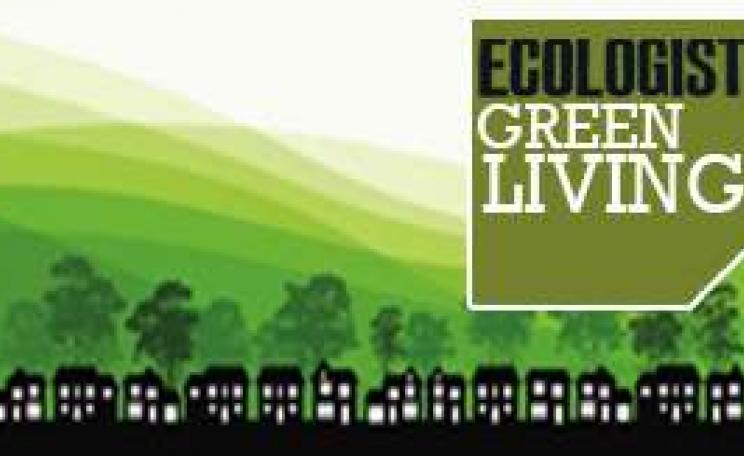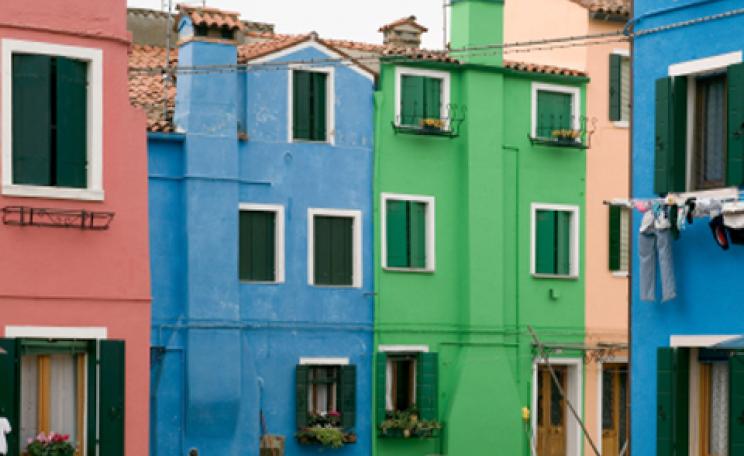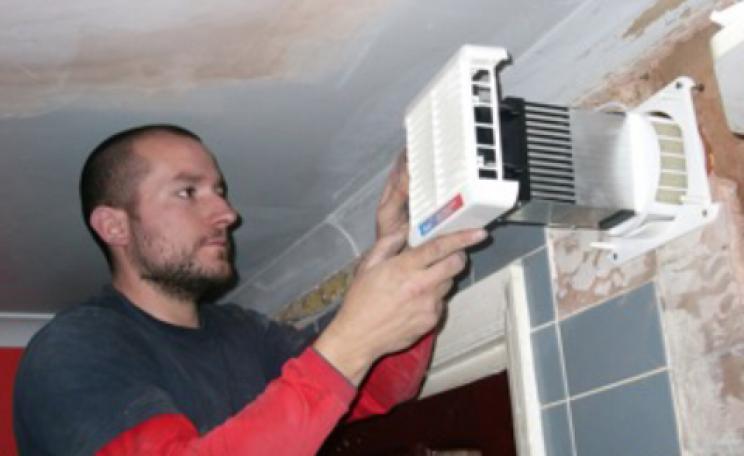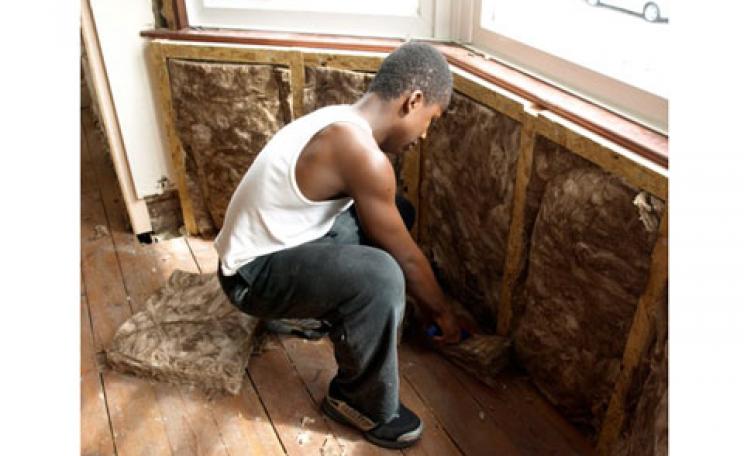A Stovax Huntingdon 25 stove, similar to the model owned by The Ecologist's very own Sue Wheat
With the cold weather closing in, it was time to think about green ways to heat our home. We chose a Stovax multi-fuel stove, which we were lucky enough to get from friends. I found a chimney sweep to fit it through HETAS; the official body for all things domestic heating-related. We got ours fitted by A J Coles – a great family business based in London - who checked and swept the chimney, and fitted a new chimney pot, a cowl [a cage on the top of the pot] and a cap on top to stop the rain. Our stove is multi-fuel but we’ll only burn wood since coal is a fossil fuel.
To get the best heat from your wood, you need a stove that is ‘clean burning’ and only some are suitable for smokeless fuel zones, so do check whether yours is or whether it can be fitted with a smokeless zone kit to make it compliant. Stoves Online has more on this and is packed with useful tips. But even with the internet and the help of assorted experts, I still had tricky decisions to make. The first was whether or not we needed to line the chimney. Stoves Online said I should in order to minimise the risk of chimney fires but Alan Coles, a chimney sweep with decades of experience, said only some houses need them. He added that since they cost around £1500 a time, it would be unethical of him to sell to me if it wasn’t necessary.
Wood: Cheap to Buy, Easy to Get Free heating? Well, yes, because, apart from the cost of the stove and the installation, wood is easy to find and very cheap indeed. In a city where every other house seems to be having its kitchen or bathroom ripped out, there is vast amounts of burnable scrap wood lying around waiting to go to the dump, which could instead be heating your house. Paying for wood to burn seems positively stupid when you can pick up a week’s supply from neighbours, most of whom are all too willing to let you have it. I can’t see the logic in buying wood that’s been transported hundreds of miles either, so I’ve become something of an eagle-eyed wood-spotting obsessive. We look for wood that’s unvarnished, unpainted and untreated, and either carry it home, or rope in friends with cars or vans to pick it up for us. I’ve also got a few friendly builders who drop off scrap wood to us (thus saving them dumping fees), and a supply of off-cuts from a furniture repair workshop. To build up next year’s wood store, which we made from scrap wooden pallets covered with tarpaulin, we’re planning to buy some logs from a local tree surgeon and season them for a year, by which time the excitement of dragging wood out of skips and yards may well have worn off.
Free heating? Well, yes, because, apart from the cost of the stove and the installation, wood is easy to find and very cheap indeed. In a city where every other house seems to be having its kitchen or bathroom ripped out, there is vast amounts of burnable scrap wood lying around waiting to go to the dump, which could instead be heating your house. Paying for wood to burn seems positively stupid when you can pick up a week’s supply from neighbours, most of whom are all too willing to let you have it. I can’t see the logic in buying wood that’s been transported hundreds of miles either, so I’ve become something of an eagle-eyed wood-spotting obsessive. We look for wood that’s unvarnished, unpainted and untreated, and either carry it home, or rope in friends with cars or vans to pick it up for us. I’ve also got a few friendly builders who drop off scrap wood to us (thus saving them dumping fees), and a supply of off-cuts from a furniture repair workshop. To build up next year’s wood store, which we made from scrap wooden pallets covered with tarpaulin, we’re planning to buy some logs from a local tree surgeon and season them for a year, by which time the excitement of dragging wood out of skips and yards may well have worn off.
Of course, if we’d thought ahead and not had our old boiler replaced with a combi-boiler a few years ago, we could have linked the stove to the central heating and got free water and space heating too. In retrospect, though, I think we did the right thing. Getting up to a cold house and waiting for the stove to get going to heat all the radiators and enough water for four showers just wouldn’t work for us. And collecting enough scrap wood to keep the home fires burning on that scale would be a bit much. Anyway, with the improved insulation, we didn’t need our gas heating on for the rest of the house until the end of November. Then we started setting it to come on for an hour or so to take the morning chill away and then just before the kids went to bed. So that’s two or three hours of gas heating rather than our previous nine. We’ve also changed to Ecotricity’s green gas, which is mostly made from composted organic waste, and also funds new bio-gas plants.
Carbon-Neutral Wood? As I basked rather smugly in the warm glow of our pretty, near zero-carbon heating system, for a good few weeks I was unaware that things were about to get tricky. Then with one click on the mouse, I stumbled across a website which catapulted me into my biggest eco-refurbishment crisis yet. It seems, according to some of the eminent researchers at the Association of Environmentally Conscious Builders [AECB] that burning wood is not carbon neutral after all. I was gutted, to say the least. I emailed the AECB in a panic, who put me onto the authors of Biomass: A Burning Issue, Nick Grant and Alan Clarke. Their paper concludes that while it’s true that trees do absorb carbon dioxide when they grow, it doesn’t mean that the best use for the wood biomass is burning it. Burning, say Grant and Clarke, produces more carbon emissions than burning gas. Disaster.
As I basked rather smugly in the warm glow of our pretty, near zero-carbon heating system, for a good few weeks I was unaware that things were about to get tricky. Then with one click on the mouse, I stumbled across a website which catapulted me into my biggest eco-refurbishment crisis yet. It seems, according to some of the eminent researchers at the Association of Environmentally Conscious Builders [AECB] that burning wood is not carbon neutral after all. I was gutted, to say the least. I emailed the AECB in a panic, who put me onto the authors of Biomass: A Burning Issue, Nick Grant and Alan Clarke. Their paper concludes that while it’s true that trees do absorb carbon dioxide when they grow, it doesn’t mean that the best use for the wood biomass is burning it. Burning, say Grant and Clarke, produces more carbon emissions than burning gas. Disaster.
Instead, they argue that timber should be left unburnt, thus imprisoning the carbon, and put to other uses; for example, as structural timber, insulation material or furniture. As owners of low-energy houses fuelled by wood burning stoves, they are both gutted too. ‘We don’t want people to hate us,’ Nick told me. ‘Please don’t shoot the messenger.’ The unfortunate result of assuming that wood-burning is carbon neutral is that it has been promoted by just about everyone, which has meant, as they point out, that wood is now being burnt faster than it’s grown, leading to rising prices and unsustainable burning practices to start.
If there is such a thing as an eco-depression, then I was in it. In fact, it hit me so badly that I still haven’t told my husband. I did get the AECB guys to admit that if my source of wood was genuinely scrap and couldn’t be storing the carbon by being used for anything helpful, I can put a the case for burning it – as long as I acknowledge it’s not a heating solution for the entire country. So now, not only am I the slightly mad trolley-wielding wood collector of Walthamstow, I’m also amassing a stash of wood that’s too good to burn and should be made into furniture. Luckily, I’ve always wanted to be a carpenter. I feel a new career coming on….
| READ MORE... | |
 |
GREEN LIVING Turning our Victorian terrace into an ecohome: part six – ventilation Better insulation means more warmth but also more mould and condensation. Sue Wheat's eco retrofit continues with a look at a super-efficient ventilation system that recycles heat while stamping out damp |
 |
GREEN LIVING Turning our Victorian terrace into an ecohome: part five Research over, it's crunch time in Sue's house, as materials are delivered, builders are educated in new eco techniques and wall insulation is fitted |
 |
GREEN LIVING Turning our Victorian terrace into an ecohome: part four - ecogadgets Sue immerses herself in the addictive world of ecogadgetry, including water-powered alarm clocks and a crash course in cooking with blankets... |
 |
GREEN LIVING Turning our Victorian terrace into an ecohome: part three - floors Insulating the floor can be fiddly, messy and costly. Luckily, there are simple, cheap options too as Sue discovers |
 |
GREEN LIVING Turning our Victorian terrace into an ecohome: part two - insulation Sue has a brief love affair with solar panels, but realises that if she shies away from the thorny issue of solid wall insulation, she's throwing good money after bad |








